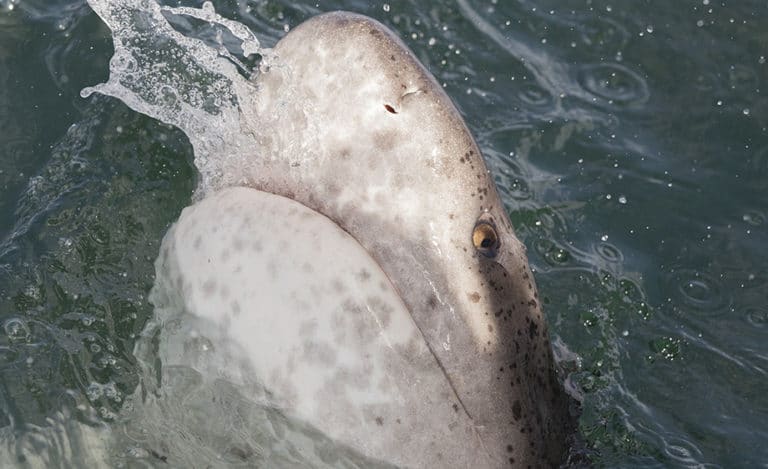By Courtney Cooper
How Marie Christine Levine Contributed to Shark Conservation
Marie Christine Levine (née Ferrara), who sadly passed away on May 14th, 2024, at the age of 83, made significant contributions to the fields of shark conservation and marine biology. Marie’s rise from aspiring artist to shark conservationist is remarkable. Born in Chicago, Illinois, and living in Princeton, New Jersey, her story is inspiring and groundbreaking. Here we look at the late Marie Christine Levine and her significant contributions to the fields of shark conservation and marine biology. We also discuss further shark facts that you might be interested in! Apex Shark Expeditions provides the best great white shark cage diving in Cape Town.
A Look at the Work of the Late Marie Levine in Shark Conservation
She moved to New York City in her early 20s to become an artist. She married OB-GYN Leonard Harold Levine in 1965. The couple moved to East Windsor, New Jersey, to start a family. Princeton became their permanent residence in 1973. Marie discovered her calling as she explored her love of the ocean and its fascinating creatures.

Marie, a trailblazer in the world of SCUBA diving, achieved her certification back in 1969. Since then, she has taught others to dive and promoted shark conservation. The Natal Sharks Board in South Africa helped her start her shark conservation career in the early 1980s. This experience inspired her lifelong dedication to protecting these misunderstood animals.
Marie established the Shark Research Institute (SRI) in 1991. Through rigorous scientific research and shark-focused tourism, SRI protects sharks and changes public perception. Her exceptional leadership led SRI to unprecedented heights, with over 17,000 members. The organisation has conducted research and conservation in Canada, South Africa, and beyond.
Marie’s participation in international forums, including CITES, earned her worldwide respect. Her work was crucial to shark species conservation. In 1999, the efforts of SRI resulted in the successful conservation of the whale shark in Honduran waters. In 2002, the whale shark and basking shark were added to CITES Appendix II, followed by the white shark in 2004. More recently, in 2013, hammerhead sharks, oceanic whitetip sharks, and manta rays were also included in these conservation efforts.
She meticulously compiled the Global Shark Attack File, a record of shark attacks from 1845 to the present. Her work provided vital data for researchers and policymakers. Marie was asked by the Egyptian government to investigate a series of high-profile shark attacks in Sharm El-Sheikh in 2010.
A successful author, she shared her research and experiences with readers. In addition to “Shipwrecks & Rescues on the Coast of New Jersey 1875-1914: From the Annals of the U.S. Lifesaving Service and Contemporary Newspaper Accounts,” she has written several shark-related books. Her children’s books, “Sharks: Q&A” and “Great White Sharks,” aim to engage and educate young readers about sharks.

Marie has won many prestigious awards for her accomplishments. She was inducted into The Explorer’s Club in the 1990s and the Women Divers Hall of Fame in 2001. She had the honour of being a member of the Board of Directors for the Women Divers Hall of Fame. Her membership in The Explorer’s Club and leadership of five Flag Expeditions have made her a marine exploration and conservation leader.
Marie has worked with sharks in 43 countries. Her captivating photographs, thought-provoking magazine articles, insightful journal papers, and informative books reflect her passion for marine conservation. Her legacy is the thousands of people she inspired and the global shark conservation progress.
Her legacy will inspire future marine conservationists and researchers, ensuring the oceans’ apex predators’ survival.
We also explore famous shark researchers and their contributions to marine science.




